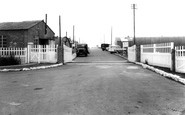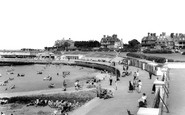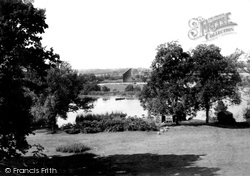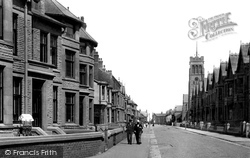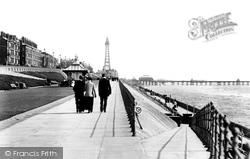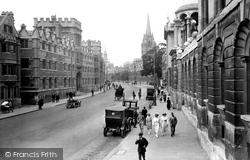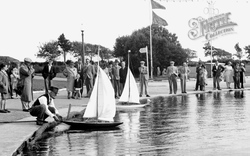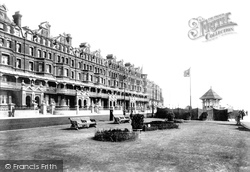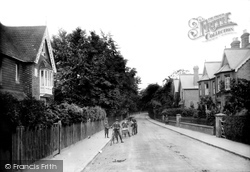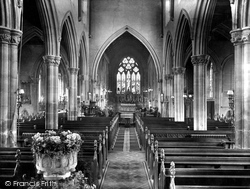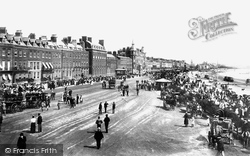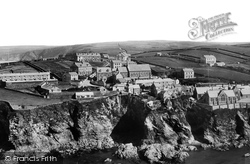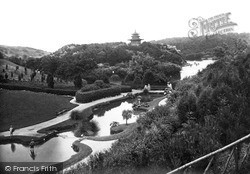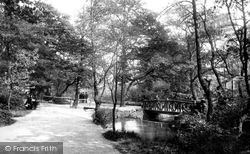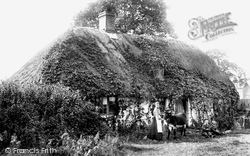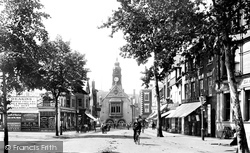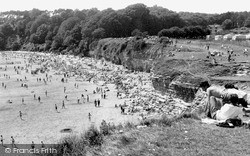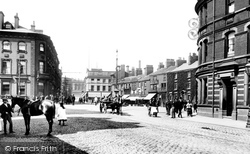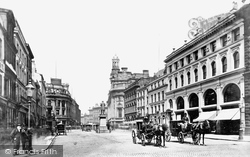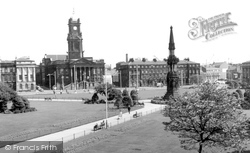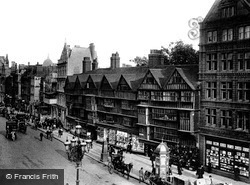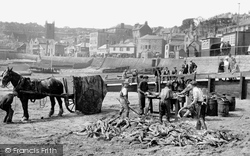Places
36 places found.
Those places high-lighted have photos. All locations may have maps, books and memories.
- Shanklin, Isle of Wight
- Ventnor, Isle of Wight
- Ryde, Isle of Wight
- Cowes, Isle of Wight
- Sandown, Isle of Wight
- Port of Ness, Western Isles
- London, Greater London
- Cambridge, Cambridgeshire
- Dublin, Republic of Ireland
- Killarney, Republic of Ireland
- Douglas, Isle of Man
- Plymouth, Devon
- Newport, Isle of Wight
- Southwold, Suffolk
- Bristol, Avon
- Lowestoft, Suffolk
- Cromer, Norfolk
- Edinburgh, Lothian
- Maldon, Essex
- Clacton-On-Sea, Essex
- Norwich, Norfolk
- Felixstowe, Suffolk
- Hitchin, Hertfordshire
- Stevenage, Hertfordshire
- Colchester, Essex
- Nottingham, Nottinghamshire
- Bedford, Bedfordshire
- Bury St Edmunds, Suffolk
- Aldeburgh, Suffolk
- St Albans, Hertfordshire
- Hunstanton, Norfolk
- Chelmsford, Essex
- Bishop's Stortford, Hertfordshire
- Peterborough, Cambridgeshire
- Brentwood, Essex
- Glengarriff, Republic of Ireland
Photos
9,106 photos found. Showing results 13,041 to 9,106.
Maps
181,006 maps found.
Books
11 books found. Showing results 15,649 to 11.
Memories
29,054 memories found. Showing results 6,521 to 6,530.
Netherthong Public Houses Part 1
This chapter is a work in progress and as it is more than the 1000 words allowed in this memory, I have split it into 2 sections. The current title is : Public House, inn, alehouse, tavern, pothouse, beer ...Read more
A memory of Netherthong by
My Mothers Memories
My mother who is 93 this year and very much alive and kicking is descended from the Cropthorne Dingleys. She spent much of her early childhood and teenage years before ww2 with her family in Cropthorne. She has such vivid ...Read more
A memory of Cropthorne
Hanging In Sully During Second World War
My mother Edith Templeman as a child seems to remember two black soldiers being hung for the rape of a local church organist during the Second World War, does anyone know if this was true?
A memory of Sully in 1945 by
A Bevin Boy
I was called up under the Bevin Scheme in April, 1944, and after a rather indifferent training at Annfield Plain Training Centre, was sent to the Hobson, as I was staying at the time in lodgings in Burnopfield with a Mrs. Crisp, ...Read more
A memory of Burnopfield in 1944 by
My Memories Of Plasterdown Camp
Following my basic training at Crownhill Barracks Plymouth in June 1951 I was transferred to Plasterdown Camp to complete intensive training until October 1951. I was in the Wiltshire Regiment and as I came from ...Read more
A memory of Tavistock in 1951 by
Netherthong Public Houses Part 2
This is the second part of my ongoing research into the public houses in Netherthong. There is reference to two inns in Thongsbridge in 1853 - the Rose & Crown publican Hiram Earnshaw, and the Royal Oak ...Read more
A memory of Netherthong by
Westgate On Sea Holidays In The 1960s
My parents took myself and my late brother to Westgate on Sea almost every Easter from 1959 to 1971. Living in west London we caught the 2.40pm train from Victoria, arriving at Westgate on Sea about ...Read more
A memory of Westgate on Sea by
The Rectory
I grew up at the rectory in Withyham, my father Peter was Rector of Withyham and Blackham from1953 to 1986. I was the eldest of eight children. I have many fond memories of my life in Withyham and also some sad ones. My father's ashes ...Read more
A memory of Withyham in 1953 by
Barleyfield
We lived on Fishers Lane, Pensby then moved to Barleyfield Road where my little sister was born in the front bedroom of no 1. We walked down to Greenbank Junior School every day, three little kids holding hands through fields of barley ...Read more
A memory of Pensby in 1967 by
My Hastings Memory
I remember my gran taking for walks along Bottle Alley in the summer in the late 1950s and early 1960s. I also remember her taking me on the last trolley bus to run. At the time she lived at 106 Bohemia Road, those houses have ...Read more
A memory of Hastings by
Your search returned a large number of results. Please try to refine your search further.
Captions
29,158 captions found. Showing results 15,649 to 15,672.
A small broad off the busy river Bure, Salhouse in 1902 displayed the tranquillity of the English countryside beloved by Victorian artists.
Most of the Wakes Week holiday-makers provided their own food, which was then cooked for them by the landlady; each room would have its own food locker in the dining room.
The North Promenade offered walkways on different levels. Here residents from the hydropathic establishments could avail themselves of a pre-dinner constitutional and take in the bracing sea air.
Soaring above the High Street is the spire of St Mary the Virgin Church, dating back to the 14th century. The even older tower is 13th-century.
The Wellington Monument 1891 One of the town's most famous landmarks is Matthew Wyatt's magnificent statue of Wellington on horseback.
One of Southsea's most famous landmarks is South Parade Pier, opened in 1879 and rebuilt in 1908 following a fire.
As with so many churches, St Andrew's in Impington exhibits an interesting blend of styles.
Popular tunes of the day were played by resident and visiting bands to amuse the visitors, who lounged in the surrounding deckchairs. On Sundays there would be a programme of sacred music.
At the time of this photograph the Convent's first Mother Superior, Sister Alice (Crocker), was still in charge; she died in 1902 aged 72 and her replacement was Sister Erminild, a daughter of J M
The church is an elegant creation of around 1300, with a tall, slim five-bay arcade and clerestorey, creating a tremendous feeling of space.
Weymouth became popular as a seaside resort thanks to the patronage of George III, who came to bathe here for the good of his health.
The Victorian school stands right on the edge of the cliff above the fishing harbour. This view shows the upper part of the village before it was altered by 20th-century developments.
In 1312 England was on the brink of civil war. Robert the Bruce seized the advantage, despatching his brother Edward and James Douglas into northern England where they sacked a number of towns.
The roof of a pagoda can be seen in the centre; it is situated on an island in the main lake. Note the exotic range of trees and shrubs growing here.
Woods were bought by the Council in 1885, and public access extended in 1887, when an additional nine acres were purchased through public subscription and presented to the town in celebration of
This cottage was believed to have been in the Guildford Road, and not demolished until the early part of the 20th century.
It is a peaceful day in Evesham at the end of Edward VII's reign, with some good examples of shop signs, such as Deakin's fruit and marmalade, 'the best that skill and science can provide', and
The beach is one of the nearest to Cardiff and was very popular with parents and young chiuldren and those who thought Penarth too commercialised.
The docks, established in 1814, went on to build some 260 ships here. A branch of Barclays Bank is on the left and WH Smith is on the right of the picture.
Salford was an area of Blackburn; the name derives from 'salix (willow tree) ford'. This is where the old pack horse trail to Accrington and the east crossed the River Blakewater in a shallow ford.
The statue of John Cobden can been seen in the middle of the square: this bronze statue, by Marshall Wood, was paid for by public subscription and was presented to the town on 23 April 1867 by the President
The well-laid-out Hamilton Square in the centre of Birkenhead is named after the town's founder, John Laird, in honour of his Scottish mother.
The magnificent frontage of half-timbered work is the finest in London. Here the plaster rendering shown in the previous photograph has been stripped off revealing a wealth of timbers.
On the sands the business of the day is under way. Men are gutting the catch and a fish 'jouster' negotiates a price for filling his trap.
Places (6814)
Photos (9106)
Memories (29054)
Books (11)
Maps (181006)






















